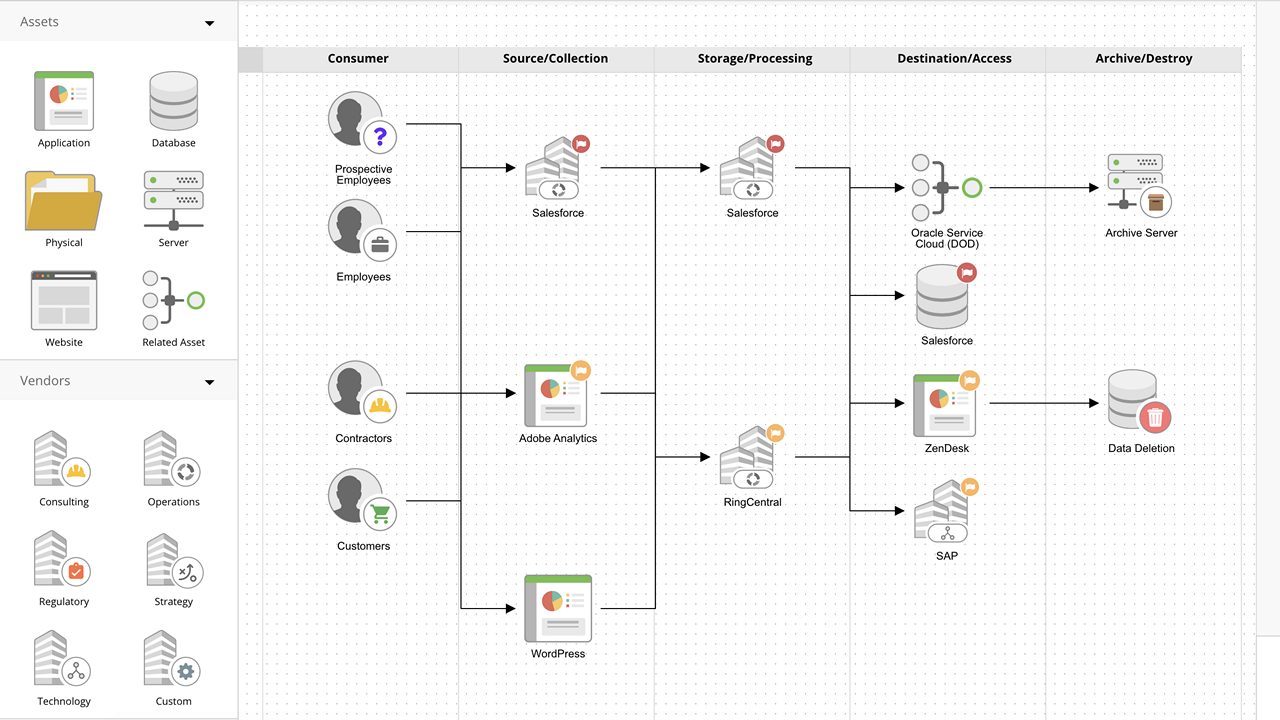Data mapping is essential to the success of any organization and its data-related processes. A single error will have a ripple effect across the organization. Data from one sub-entity to another will contain replicated errors, incorrect storage of data, and inaccurate analysis of it. That said, data mapping can significantly improve the quality of data within your organization.
To influence your next project, you can seek the professional guidance of the data experts at Ethyca. Their knowledge and expertise in the matter have proven crucial to organizations and businesses in the past.
What is data mapping?

As the name suggests, data mapping involves the determination of the connection between the source and target destination. Data mapping will document the origins and flow of the data along the different paths as well as identify any changes made. Through data mapping, an organization is also able to specify the data conversion rules that apply.
Data mapping plays a crucial role in supporting other data integration tasks and functions. The extraction, transformation, and loading of data by different teams are streamlined thanks to the controls expressed in data mapping.
Its importance

With data mapping, the whole organization speaks the same ‘language’. Data mapping controls include duly categorizing data and setting standards. Think of data mapping as a style guide in a Word document. Additional content is standardized to the same style as previous data. Data mapping allows the collection and manipulation of data in the future to easier and effective.
Data mapping increases the efficiency of any business. With data processes streamlined between departments, insights and analysis can be made faster and client queries are handled smoothly. The controls within data mapping allow collaboration between departments and also between internal and external stakeholders to be easier.
The use of a data mapping tool plays a huge role in the quality of other data management processes. It is the backbone of data management. To express this, data mapping has been discussed under the following data management processes:
- Data transformation. Data transformation involves the conversion of data from one format to another. Depending on the needs of the project, data transformation will also include the removal of duplicate data and converting data types. A data mapping tool will set the instructions for data conversion to take place from the source format to the destination format.
- Data migration. Data needs to be transferred from one application to another. This is referred to as data migration. Data mapping comes quite in handy here. Typically change of data from one application to another will require the use of scripting languages. But with a data mapping platform, the interface will ease the migration process and ensure an effective transfer.
- Data integration. The required data could be in the different devices and sources. Data integration will involve the merger of data into a single platform and also, into a similar schema. With data mapping, the data on applications and devices can be digitally transformed to meet the demands of the organization.